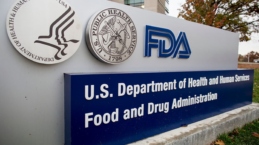

insights
Debate on FDA Oversight of Laboratory Developed Tests Continues
On September 29, 2023, the U.S. Food and Drug Administration (FDA) announced their proposed rule, “Medical Devices; Laboratory Developed Tests.” The rule, if finalized, would amend the Federal Food, Drug, and Cosmetic Act (FD&C Act) such that laboratory developed tests (LDTs) would be regulated as medical devices. The FDA is proposing a policy under which the agency intends to provide greater oversight of LDTs through a phaseout of its general enforcement discretion approach to LDTs.
The phased approach would consist of regulatory requirements becoming applicable in five stages over four years. The premarket review requirements would fall within the final two stages. It’s still unclear when the requirements will become effective. The phased approach will include ending enforcement discretion with respect to requirements for medical device reporting, correction and removal reporting, investigational device exemptions, good manufacturing practice (GMP), and ultimately, premarket review.
A Brief History of LDTs
LDTs are a type of in vitro diagnostic (IVD) intended to be designed, manufactured, and used within a single clinical laboratory. IVDs are defined by the FDA as intended medical devices for use in the collection, preparation, and examination of specimens taken from the human body (such as blood, saliva, or tissue).
Historically, LDTs were subject to enforcement discretion by the FDA, meaning the agency elects to not enforce certain regulatory requirements for medical devices that have been deemed lower-risk products. Furthermore, during the discretionary period, these medical devices do not require regulatory submission, review, and authorization before heading to market.
With respect to clinical laboratories, FDA has historically exercised enforcement discretion if LDTs were developed and used within a single certified laboratory. In FDA’s view, LDTs presented lower risks because they were generally used in the context of rare diseases and to meet the needs of local populations. FDA believed they were generally well-characterized, and the tests were performed by lab personnel with requisite expertise. Plus, they were used by single institutions, housing both the clinic and the lab responsible for a subset of the population.
Currently, LDTs have grown in complexity due to integration with hardware instrumentation and software for generating results. Additionally, LDTs are often used in laboratories outside of the patient’s healthcare setting and often manufactured in high volume for large and diverse populations.
The Debate on FDA Oversight of LDTs Continues
Whether FDA should exert more oversight over LDTs has been up for debate for quite some time. Those who opt for less oversight by FDA believe that oversight provided by the Centers for Medicare & Medicaid Services (CMS) and Clinical Laboratory Improvement Amendments (CLIA) is sufficient.
Congress passed CLIA in 1988 to establish quality standards for all non-research laboratory testing performed on specimens derived from humans for the purpose of prevention, diagnosis, or treatment of disease. CLIA regulations apply to laboratory testing in all settings including commercial, hospital, and physician office laboratories. CMS oversees laboratories, but not the safety and effectiveness of the LDTs.
CMS only requires labs to have documentation of their tests’ analytical validity but does not require clinical validity data. Analytical validity refers to how well a test performs in detecting or measuring the presence of a given chemical compound, hormone, or genetic marker in each sample. As an example, given a test for breast cancer, CMS would only assess whether a test accurately detects breast cancer proteins, not whether the detection of the proteins is a reliable way to diagnose breast cancer. The latter is clinical validity, which refers to how accurately a test predicts the presence of, or risk for, a given condition.
The themes within the proposed rule are certainly not new. FDA issued a draft guidance in 2014 in which the agency reiterated its statutory authority over LDTs and proposed a risk-based framework. Under the framework, certain high-risk LDTs would have been subject to premarket review, Quality Systems requirements, Medical Device Reporting (MDR) for adverse events and malfunctions, and registration and listing requirements. Ultimately, the draft guidance was never finalized, proving to be too controversial and a hindrance to innovation.
In 2017, FDA published a discussion paper proposing LDT oversight that would focus on “new and significantly modified high and moderate risk LDTs.” Critics view regulatory oversight as burdensome and stifling innovation and availability of important testing. Laboratories would need to comply with medical device regulations, posing a huge lift for them considering extensive requirements for premarket review and design controls. Others argue FDA does not have statutory authority to regulate LDTs under its medical device authority. Due to this continued backlash from industry and LDT developers, the FDA invited Congress to take up the issue.
Congress then took a legislative approach to increasing oversight with the Verifying Accurate Leading-edge In Vitro Clinical Tests Development Act (VALID Act) which has been in process since 2018. VALID, however, failed to pass in the December 2022 omnibus spending bill. Opponents of the VALID Act are concerned that patient access to clinical diagnostics may be hindered due to increased regulation, stifling innovation, increasing costs, and other barriers to market access.
This type of pushback from industry was previously seen with increased evidence requirements for 510(k)s, clinical decision support software, and AI-enabled medical devices to name a few. LDTs are definitely not new territory for FDA to navigate.
COVID-19 and LDTs
The COVID-19 pandemic brought to the forefront FDA’s increased interaction with and oversight of LDTs. FDA’s enforcement discretion approach did not, and currently does not, apply to LDTs submitted for emergency use authorization (EUA). This means that laboratories seeking an EUA must submit analytical and clinical data. FDA received many EUA requests for COVID-19 diagnostics, and points to examples in the proposed rule where data that was submitted with EUAs often lacked sufficient design and clinical validation.
FDA monitored the performance of all COVID-19 tests through reports of performance submitted to FDA by test developers, health care providers, and consumers. According to FDA, this includes reports of false positive or false negative test results. FDA had received more than 18,000 reports for COVID-19 tests by the end of 2021. FDA issued ten letters to clinical laboratory staff and health care providers related to COVID-19 tests regarding false positive or false negative results from antibody tests. FDA posts these letters on its website to inform clinical laboratory staff and health care providers about safety concerns and recommendations about the appropriate use of COVID-19 tests with LDTs. FDA revised its approach to reviewing COVID-19 antibody testing to include a more thorough evaluation of the science and clinical validity of these tests.
Halloran’s Point of View
Under the current CLIA standards, there is not adequate oversight of the accuracy and reliability of the LDT. For diagnostic tests, safety and effectiveness are much more linked with one another than for traditional medical devices. The safety of the device to the patient relates to the impact of the device’s performance, such as false positive or false negative results. Therefore, understanding the impact to the patient relies on both analytical and clinical validity.
A regulatory framework that considers the increasing complexity of LDTs and the broad market for which they can be made available is especially important. Assessment of test performance would help ensure tests are safe, effective, and perform as intended. Inaccurate tests, such as false positive results, can expose patients to harm by leading them to pursue unnecessary treatments or delaying diagnosis of serious conditions. Similarly, false negative results can delay or hinder patients from receiving proper treatment for conditions that can progress unchecked. The need for clinical validity is especially high in cases where a clinical decision is based primarily or entirely on the result of a diagnostic, such as companion diagnostics that are used to screen cancer patients to receive certain therapeutics.
Navigating the regulatory landscape within diagnostics can be tricky. If the proposed rule is finalized without changes, FDA will regulate all LDTs as medical devices. Understanding the implications of the changes in terms of what requirements are for analytical validation and clinical validation and thinking about each design decision from a risk-based perspective requires early strategic planning.
Halloran has expertise in medical device product development, regulatory strategy with in vitro diagnostics including companion diagnostics and precision medicine, and risk management.
Comments to the proposed rule are due by December 4, 2023. If you have questions and want to share your feedback to the rule, contact us.




